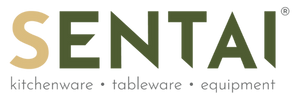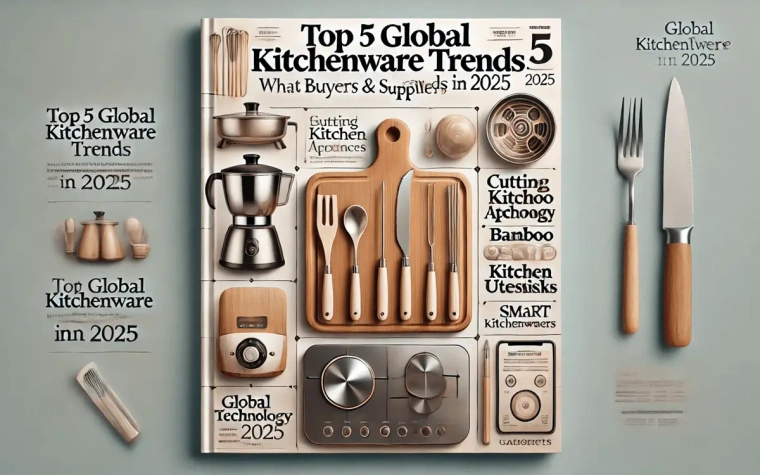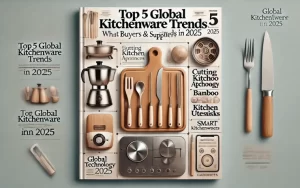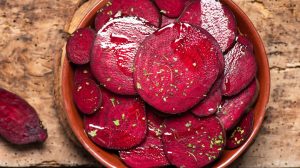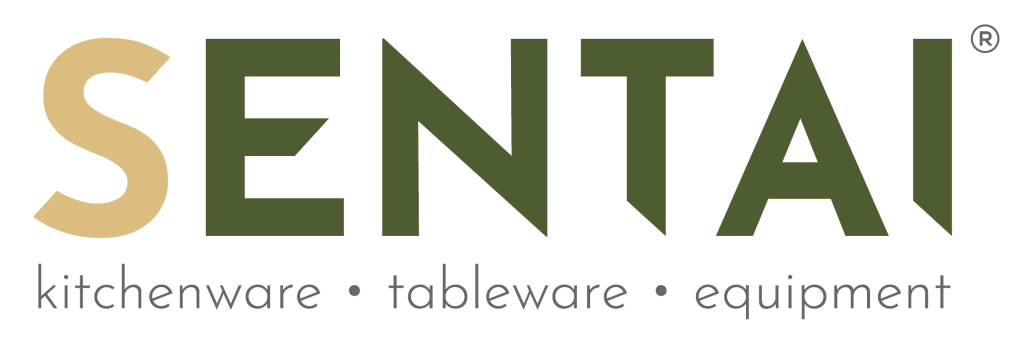Let’s dive into the key factors reshaping the kitchenware industry in 2025 and explore how buyers and suppliers can adapt to these changes effectively.
1. Sustainable Materials Leading Kitchenware Exports
As environmental awareness grows, the demand for sustainable kitchenware is skyrocketing. Consumers and importers are increasingly prioritizing products made from eco-friendly materials like bamboo, silicone, and recycled metals.
This shift is reshaping the global kitchenware industry, pushing suppliers to adopt greener production methods.
The Data Behind the Trend
Sustainability is no longer just a buzzword; it’s a key purchasing factor. According to Statista, 62% of European and American importers now require eco-certifications for their kitchenware products.
This demand is driven by stricter environmental regulations and a consumer base that favors low-carbon, non-toxic, and recyclable alternatives.
Real-World Growth: Bamboo & Silicone Boom
One clear example of this trend is the rise of bamboo, cutting boards, and silicone kitchen utensils. These products have seen a significant export increase, particularly in markets like North America and Europe.
On Alibaba’s international marketplace, search volumes for “bamboo cutting board” and “BPA-free silicone kitchen tools” have surged, highlighting their growing popularity.
Trade Tips: Ensuring Certification Authenticity
For exporters looking to tap into this market, certification is key. Buyers prioritize products with FSC (Forest Stewardship Council) certification for wooden items and BPA-Free labels for plastics. However, verifying these claims is crucial. To authenticate eco-certifications, buyers should:
- Check official certification bodies (e.g., FSC, SGS, TÜV).
- Use online verification tools from certification organizations.
- Request test reports from suppliers to confirm compliance with safety standards.
By ensuring genuine certifications and sustainable sourcing, kitchenware brands can enhance credibility, attract eco-conscious buyers, and drive long-term success.
2. Smart Kitchen Tech Goes Mainstream
Imagine a smart kitchen where your cutting board weighs ingredients, your stove adjusts temperatures automatically, and your fridge reminds you when to restock groceries.
Smart kitchen technology is no longer futuristic—it’s becoming a mainstream necessity.
Market Growth & Consumer Demand
With the rise of smart home ecosystems, kitchen technology is evolving rapidly. According to Grand View Research, the global smart kitchen appliance market is projected to grow at an impressive CAGR of 17.9% from 2024 to 2030, reaching $60.2 billion by 2030. Consumers are drawn to AI-powered convenience, from voice-controlled cooking assistants to automated meal prep devices.
Solving the Cross-Border After-Sales Challenge
For suppliers and manufacturers expanding globally, one major hurdle is after-sales support. Unlike traditional kitchenware, smart appliances require:
- Multilingual App Support – Ensuring seamless user experience across different regions.
- Global Warranty Coverage – Offering international repair and replacement options.
- Cloud-Based Updates – Providing remote software fixes and feature enhancements.
By addressing these pain points, businesses can increase trust, reduce return rates, and enhance the user experience in international markets.
Final Thoughts
From eco-friendly materials to cutting-edge smart technology, these trends are shaping the future of kitchenware. For buyers and suppliers alike, adapting to these shifts is essential for staying competitive in a rapidly evolving global market.
3. Supplier Selection Red Flags – What to Watch Out For
Choosing the right kitchenware supplier is critical for maintaining product quality and ensuring compliance with safety regulations. However, many buyers fall into traps set by unreliable manufacturers. Here are some key red flags to watch for when sourcing suppliers.
Checklist of Common Supplier Red Flags
- Minimum Order Quantity (MOQ) Too Low – If a supplier offers an MOQ 80% lower than the industry standard, it could indicate cost-cutting in materials or manufacturing.
- Excessive Use of “Factory Price” Claims – Many middlemen falsely advertise “factory prices” to attract buyers. Always verify factory ownership by checking business licenses and requesting a factory visit.
Reliable vs. Risky Suppliers
| Feature | Reliable Supplier ✅ | Risky Supplier ❌ |
|---|---|---|
| MOQ Standards | Industry-aligned | Unusually low MOQ |
| Certifications | ISO 8442, BPA-Free, FSC | No safety certificates |
| Pricing Transparency | Realistic pricing | “Factory price” overuse |
| Business Model | Direct manufacturer | Hidden middleman |
By carefully vetting suppliers using this checklist, buyers can avoid quality risks and secure trustworthy partnerships.
4. Cultural Adaptation in Kitchenware Design
One-size-fits-all doesn’t apply to kitchenware design. Cultural preferences strongly influence material choices, aesthetics, and functionality, making localized product adaptations essential for global success.
Regional Design Preferences
- North America & Europe – Matte black & stainless steel dominate due to their sleek, professional look. Preferred by chefs and high-end consumers looking for modern, minimalist designs.
- Southeast Asia – Bright colors & anti-mold features are in high demand due to the hot and humid climate. Consumers prefer lightweight, easy-to-dry materials that resist moisture.
- Middle East – Gold-trimmed, heavy-duty cookware aligns with luxury aesthetics and cultural dining traditions. Cast iron and thick aluminum pans are popular for slow-cooked, rich-flavored dishes.
Practical Sourcing Advice
- Request regional customization samples from suppliers.
- Test demand by launching small batches of culturally tailored products.
- Work with designers familiar with local consumer behavior.
By adapting designs to local tastes and needs, brands can boost global appeal and market penetration.
5. Conclusion: Your Trusted Partner in Global Kitchenware Solutions
YangJiang Market Value Enterprise stands at the forefront of kitchenware innovation, offering tailored OEM manufacturing and wholesale solutions for distributors and retailers worldwide. With an extensive network of certified factory partners, we deliver products that blend quality craftsmanship with modern design—from eco-conscious bamboo collections to smart kitchen technologies. Our robust logistics infrastructure and rigorous quality assurance processes ensure timely, compliant deliveries across global markets.
Elevate your sourcing strategy today. Explore our curated product portfolio or connect with our trade specialists to discuss custom solutions. As a trusted partner to leading retailers, we’re committed to helping you navigate the dynamic kitchenware industry with confidence. Let’s build success together.
